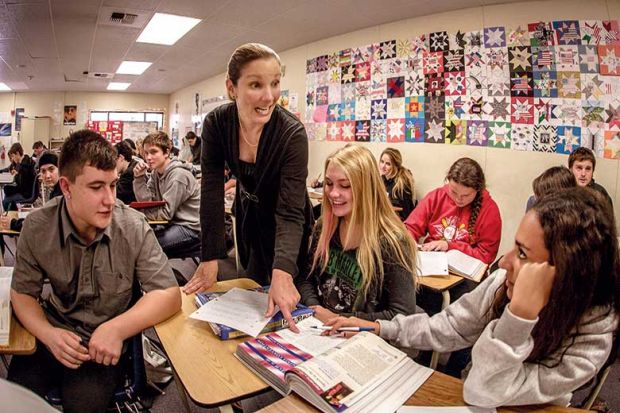A blowout in student-staff ratios in Australian higher education may already have pushed some universities beyond an “educational quality tipping point”, a study warns.
The new analysis of staffing and enrolment statistics has highlighted both positive and negative trends, with staff recruitment largely favouring women but failing to keep pace with student numbers.
The report, published by the LH Martin Institute at the University of Melbourne, has found that women comprised almost two out of every three new staff members hired between 2008 and 2017. Female university ranks increased by some 16,200 over that period, compared with about 8,400 more men.
The recruitment drive has pushed women closer to parity with men in academic roles, and increased their dominance of non-academic positions. But rampant enrolment growth has seen universities gain 31 additional students for every extra academic.
Report author Frank Larkins, a former University of Melbourne deputy vice-chancellor, said that these are aggregate figures and the situation is worse at some institutions.
He said that the failure of staffing to match student growth has exacerbated what were already “pretty high” student-staff ratios a decade ago.
“We’re falling behind,” Professor Larkins told Times Higher Education. “We started from a challenging base of about 22 students per [academic] staff member. We’re now up to 25 or so. That is not a good trend.”
He said that top UK and US universities have student-staff ratios below 20 to 1. Australia has “slipped” out of that range in the past couple of decades, raising stress levels for students as well as staff.
“A lot of the growth has been in international students,” Professor Larkins added. “They need more intensive help in general – cultural adjustment, language adjustment and so on.”
Professor Larkins said that universities have “unashamedly” been reserving positions for women to correct staff gender ratios. The biggest increase has been above senior lecturer level, with women now constituting almost one-third of academics in this classification – up from less than one-quarter in 2008.
Women have also increased their share of senior lecturer positions by more than 6 percentage points to 46 per cent, and now occupy 53 per cent of lecturer positions. “Given that 58 per cent of students are women, having female role models is quite important,” he said.
The paper also charts a significant rise in the number of part-time university staff, both male and female. And it pinpoints a massive boost in the proportion of teaching-only staff, from 3 per cent of academics in 2008 to 11 per cent by 2017.
In raw numbers, teaching-only positions more than doubled between 2008 and 2013, and had almost doubled again by 2017. By contrast, the number of research-active academics declined after 2013.
Professor Larkins said that this reflected the influence of international rankings and research assessment exercises. “It’s been very deliberate. After the first [Excellence in Research for Australia] exercise in 2010, where universities’ [strengths and weaknesses] were exposed, many took strategic decisions about refocusing their research priorities and deciding they weren’t going to have the same breadth,” he said.
“Vice-chancellors would unashamedly say, we’ve narrowed our research profile to improve our rankings.”
POSTSCRIPT:
Print headline: High student-staff ratio pressures Australian campuses
Register to continue
Why register?
- Registration is free and only takes a moment
- Once registered, you can read 3 articles a month
- Sign up for our newsletter
Subscribe
Or subscribe for unlimited access to:
- Unlimited access to news, views, insights & reviews
- Digital editions
- Digital access to THE’s university and college rankings analysis
Already registered or a current subscriber? Login








